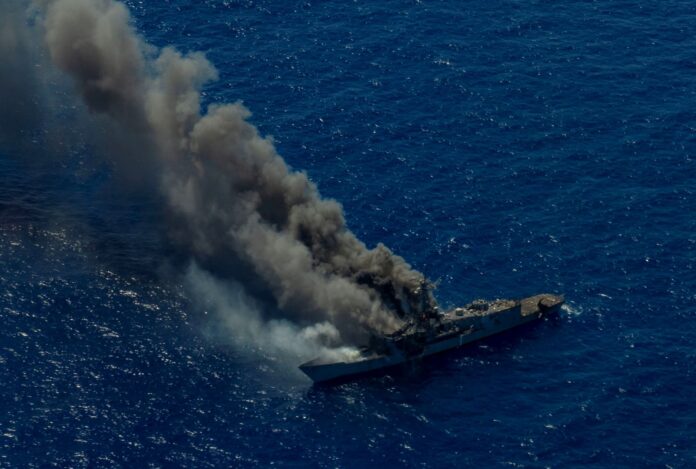
U.S. joint forces conducted coordinated multi-domain, multi-axis, long-range maritime strikes in the Hawaiian Islands Operating Area during a sinking exercise (SINKEX) on the decommissioned guided-missile frigate ex-USS Ingraham, Aug. 15.
Units from Vinson Carrier Strike Group (VINCSG), Submarine Forces Pacific, 1 Marine Expeditionary Force/3rd Marine Air Wing, III Marine Expeditionary/3rd Marine Division, and U.S. Army Multi-Domain Task Force participated in the joint, live-fire exercise.
There isn’t much known about this SINKEX right now, however, according to pictures released by the US Pacific Fleet, numerous types of weapons including Naval Strike Missile, UGM-84 Harpoon, and AGM-154 Joint Stand-Off Weapon (JSOW) were used.
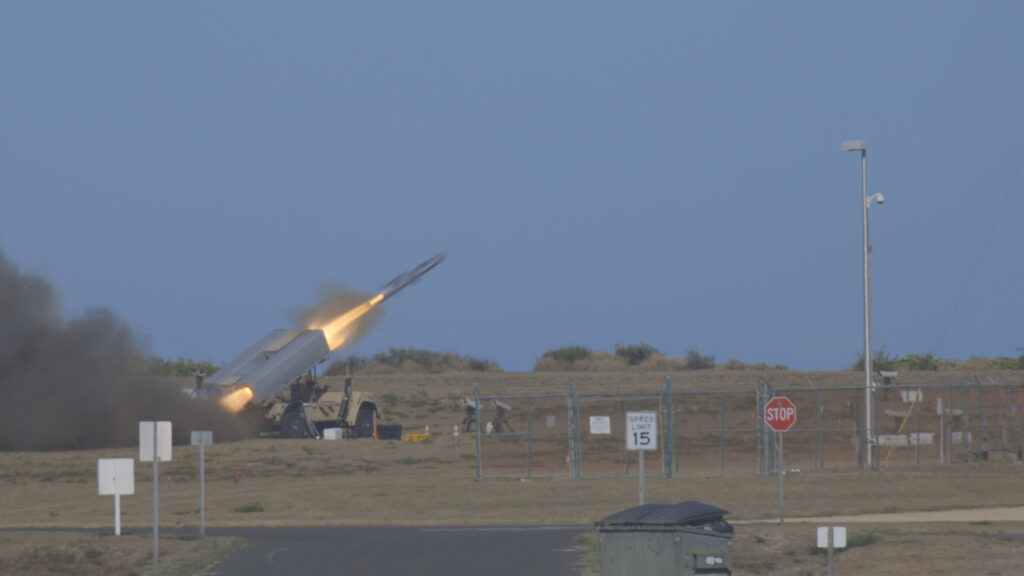
“Lethal combat power was effectively applied to a variety of maritime threats over the last two weeks in a simulated environment as part of the US Navy’s Large-Scale Exercise and expertly demonstrated Sunday with live ordnance,” said U.S. 3rd Fleet Commander Vice Adm. Steve Koehler. “The precise and coordinated strikes from the Navy and our joint teammates resulted in the rapid destruction and sinking of the target ship and exemplify our ability to decisively apply force in the maritime battlespace.”
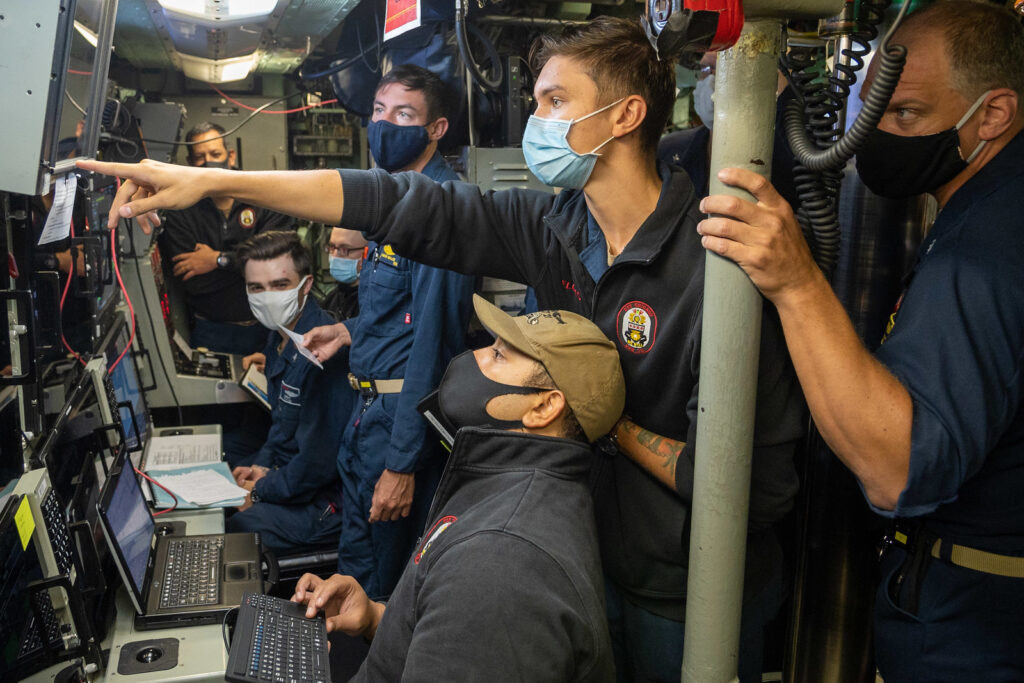
Former Navy vessels, known as hulks, are prepared in strict accordance with laws specified and enforced by the Environmental Protection Agency by a general permit held by the Navy under the Marine Protection, Research, and Sanctuaries Act.
Each exercise is required to sink the hulk in at least 1,000 fathoms (6,000 feet) of water and at least 50 nautical miles from land and surveys are conducted to safeguard against harm to people or marine mammals during the event. Prior to being transported for participation in a sinking exercise, each vessel is put through a rigorous cleaning process for environmental safety and is inspected to ensure the ship meets EPA requirements.
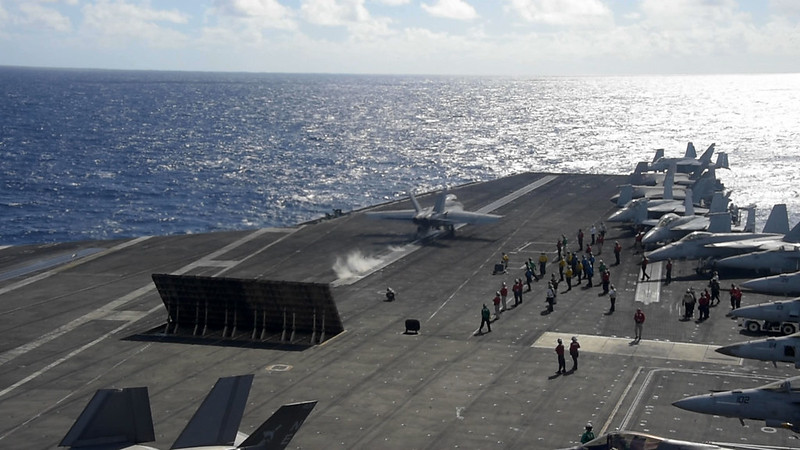
Ex-Ingraham was a guided missile frigate commissioned on Aug. 5, 1989, and was decommissioned on Jan. 30, 2015. The ship was named for Duncan Nathaniel Ingraham and is the fourth Navy ship with the namesake. It is the second of its name to be used in a sinking exercise; ex-USS Ingraham (DD 694), which was decommissioned in 1971 and sold to the Greek Navy, was sunk in 2001.
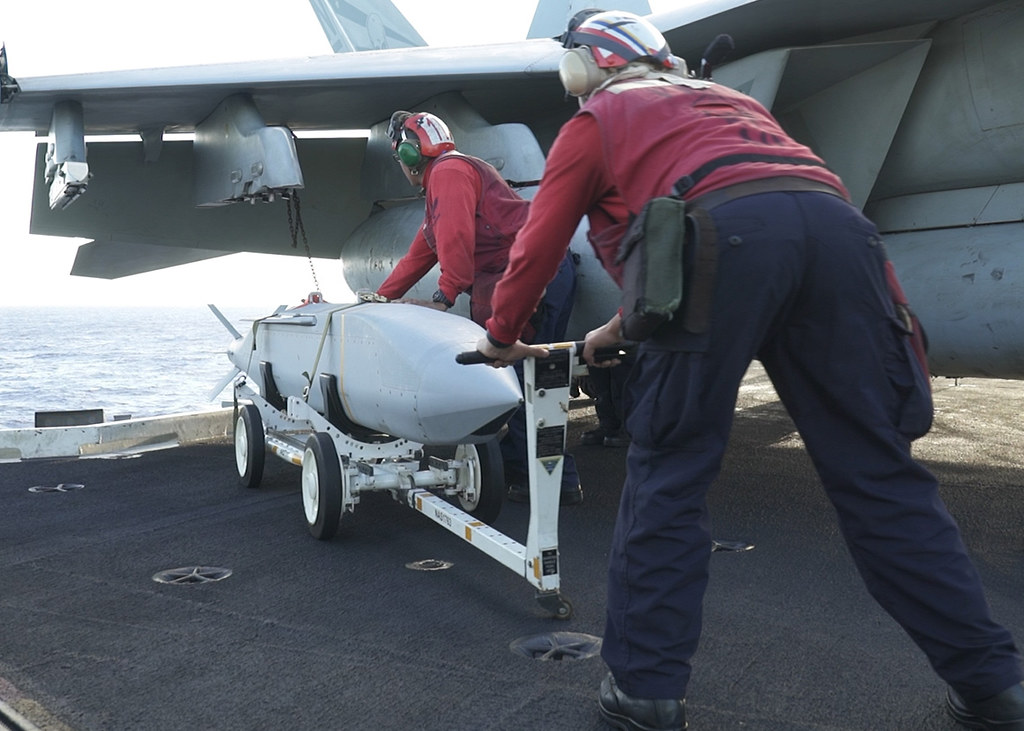
Check out Naval Library App to find out the specifications of the US Naval Assets and Weapons.




